Medical Information
Tables
• Psychostimulants and Sedatives
• Degrees of Hearing Impairment
• Examples of Typical Sound Intensities
• Infectious Diseases-Modes of Transmission
Tables
Anti-anxiety Medications
These medications work by diminishing the activity of certain parts of the brain, called the limbic system. The symptoms associated with anxiety may include tension, agitation, irritability, panic attacks, and feelings of dying or going crazy. Physical symptoms include excessive sweating, heart palpitations, chills, fainting, racing pulse and flushes. Anxiety may be a disorder by itself or a component of other psychiatric disorders.
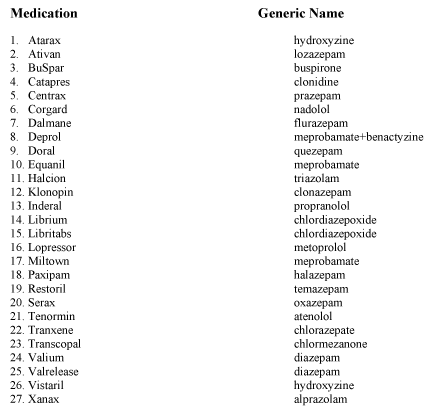
PLEASE NOTE: The contents of this NASET document are for informational purposes only. The content is not intended to be a substitute for professional medical advice, diagnosis, or treatment.
Download a PDF Version of this Table – CLICK HERE
Anti-depressant Medications
Sometimes referred to as tricyclic drugs, these drugs affect the symptoms associated with depression by adjusting the levels of neurotransmitters in the brain such as dopamine, serotonin and epinephrine. These medications are usually prescribed when the treatment of the condition is considered long term. Doctors do not usually like to use such powerful tricyclic antidepressants for short term or transitory depression.
These medications tend to elevate the individual’s mood, improve sleep patterns, increase energy levels and physical activity and restore perception to a more positive level.
In the case of some antidepressants, once the doctor feels comfortable with the levels of medication attained, he/she may prescribe a single dose at night, a practice called night-loading.
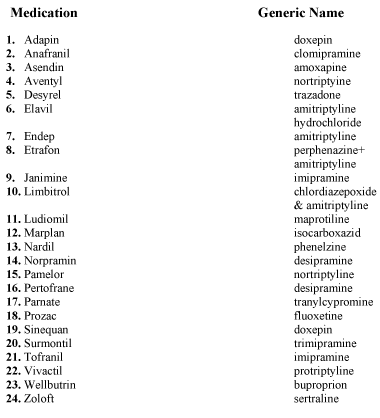
PLEASE NOTE: The contents of this NASET document are for informational purposes only. The content is not intended to be a substitute for professional medical advice, diagnosis, or treatment.
Download a PDF Version of this Table – CLICK HERE
Antipsychotic Medications
These medications work by blocking one of the chemical messengers of the central nervous system: dopamine. These drugs are sometimes referred to as neuroleptic drugs because they block the dopamine receptors in the brain and restore the imbalance of nerve transmissions associated with psychotic behaviors.
Neuroleptic drugs should be considered very powerful and as a result pose potential risks. Careful monitoring is required and withdrawal symptoms such as headaches, nausea, dizziness and increased heart rate may occur if abruptly stopped. It should also be noted that alcohol consumption during the time the individual is on these medications may enhance the effects of the drug and increase the risk of depression.
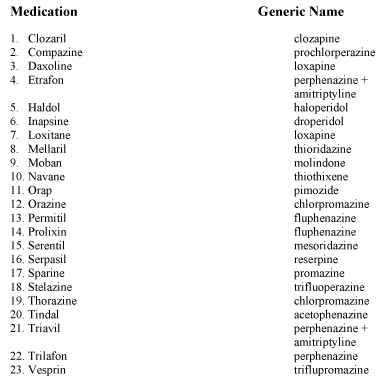
PLEASE NOTE: The contents of this NASET document are for informational purposes only. The content is not intended to be a substitute for professional medical advice, diagnosis, or treatment.
Download a PDF Version of this Table – CLICK HERE
Psycho-stimulants and Sedatives
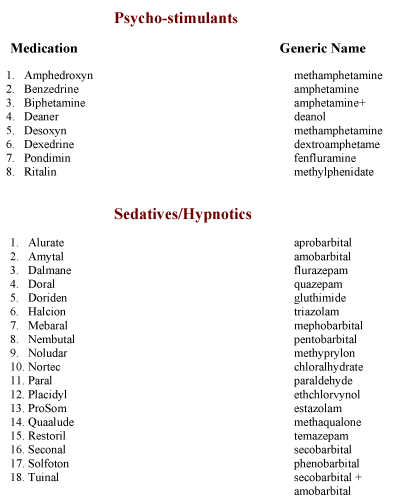
PLEASE NOTE: The contents of this NASET document are for informational purposes only. The content is not intended to be a substitute for professional medical advice, diagnosis, or treatment.
Download a PDF Version of this Table – CLICK HERE
Degrees of Hearing Impairment
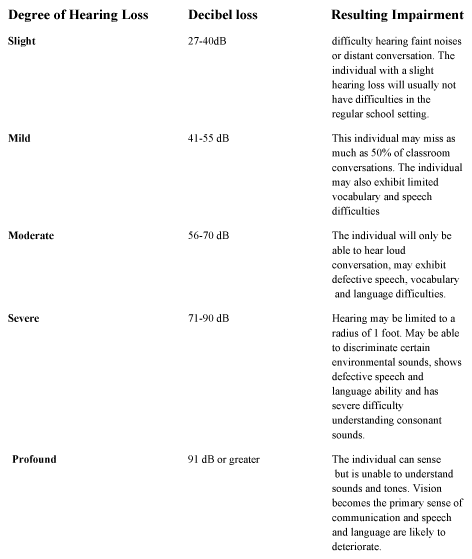
PLEASE NOTE: The contents of this NASET document are for informational purposes only. The content is not intended to be a substitute for professional medical advice, diagnosis, or treatment.
Download a PDF Version of this Table – CLICK HERE
Examples of Typical Sound Intensities
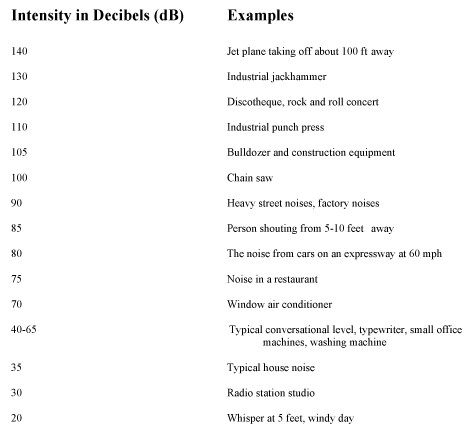
Infectious Diseases – Modes of Transmission
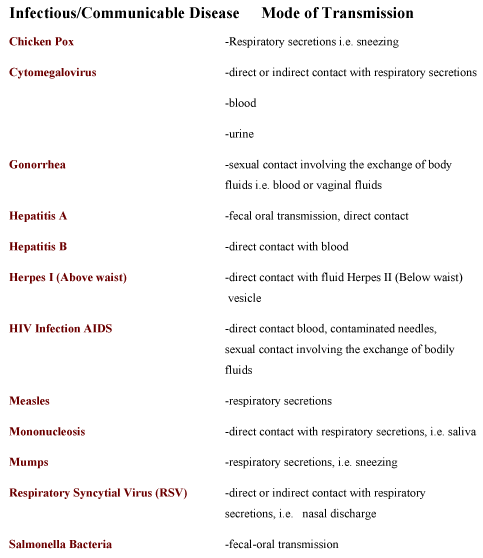
PLEASE NOTE: The contents of this NASET document are for informational purposes only. The content is not intended to be a substitute for professional medical advice, diagnosis, or treatment.
Download a PDF Version of this Table – CLICK HERE

